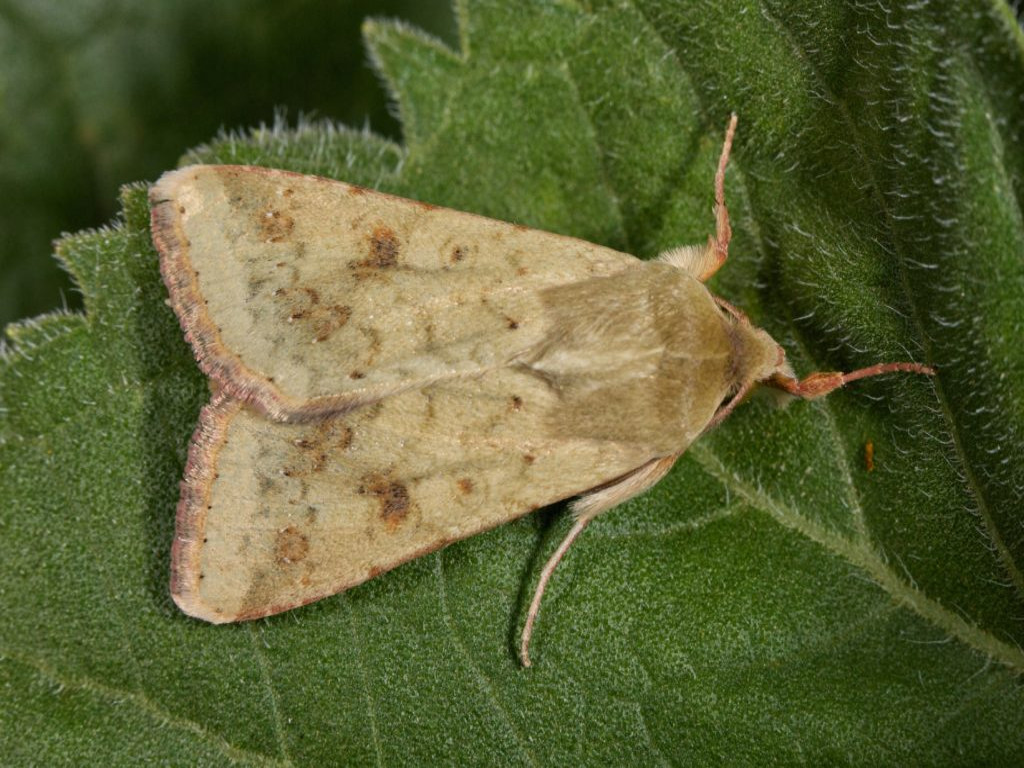Know your pest: Cotton Bollworm
The African bollworm has a very wide host range and feeds on almost all cultivated crops. It is regarded as one of the major pests of cotton in South Africa.
The African bollworm has a very wide host range and feeds on almost all cultivated crops. It is regarded as one of the major pests of cotton in South Africa.

The life cycle of cotton bollworm
The life cycle of cotton bollworm ranges between 25 to 35 days and is temperature dependent. Six generations can be completed within a year, with moths being most active at dusk and dawn. Male moths have a characteristic light pale green colour while female moths are brown. Female moths lay large batches of eggs (1 000 – 3 000) on the host plant, which start to hatch after 2 to 3 days. The eggs are initially cream or white in colour with longitudinal ribs, but darken just before hatching. Emerging larvae will start to feed close to the hatched eggshell. After moulting the 2nd instars will make their way towards the cotton balls where they will continue to feed.
Larvae are cannibalistic in nature with larger larvae feeding on smaller larvae in the same area. Larvae vary in colour from pinkish to green or yellow, but the most common colour is brown. Young larvae have black spots and can look very similar to young Fall armyworm larvae with dark heads. Older larvae have yellow or brown heads with clear spiracles and alternating dark and pale longitudinal bands along the body. When larvae are disturbed during feeding, they can take on an aggressive snake-like appearance. There are normally six larval instars as feeding continues for 2 to 3 weeks before larvae pupate in the soil. The pupae have a smooth shiny brown appearance with two spines on the rear end and is seldom seen. Pupation takes 10 to 20 days, following which the first moths start to emerge, begin their search for a mating partner and repeat the cycle again.

Damage
Damage to cotton includes prolific feeding by young larvae on the growing tips and terminal buds. From the 2nd instar onwards squares, flowers and balls are attacked and often hollowed out. When bollworms attack the cotton blooms, they may open prematurely and stay fruitless. Damaged bolls fall off or fail to produce lint or alternatively produce lint of an inferior quality. Damage symptoms characterised by circular holes bored into fruit, serve as entry points for secondary infections by fungi and bacteria and may lead to rotting of fruits. Leaf and stem damage can occur occasionally but are less serious.

Control
Planting cotton cultivars modified with insect resistant technology (Bt cotton) offers excellent control against infestation by cotton bollworm. For successful control and to ensure insect resistance management, it is crucial that the area planted with Bt cotton also includes the planting of a mandated refuge. Weeding, inter-row cultivation, removing crop residues, deep ploughing before planting and the use of registered insecticides for bollworm are additional control options to help prevent the build-up of bollworm populations to economic threshold levels.
Naturally occurring beneficial insects such as the small egg parasitoid, Trichogramma spp. or the larval parasitoid, Cotesia kazak also contribute to lowering populations. Early detection can be achieved by regular scouting of cotton fields and monitoring the flights of moth populations with pheromone traps. Early detection leads to timely actions, so producers need to stay alert to what is happening in the field and reduce bollworm infestations before its causes serious crop damage.
Loading
